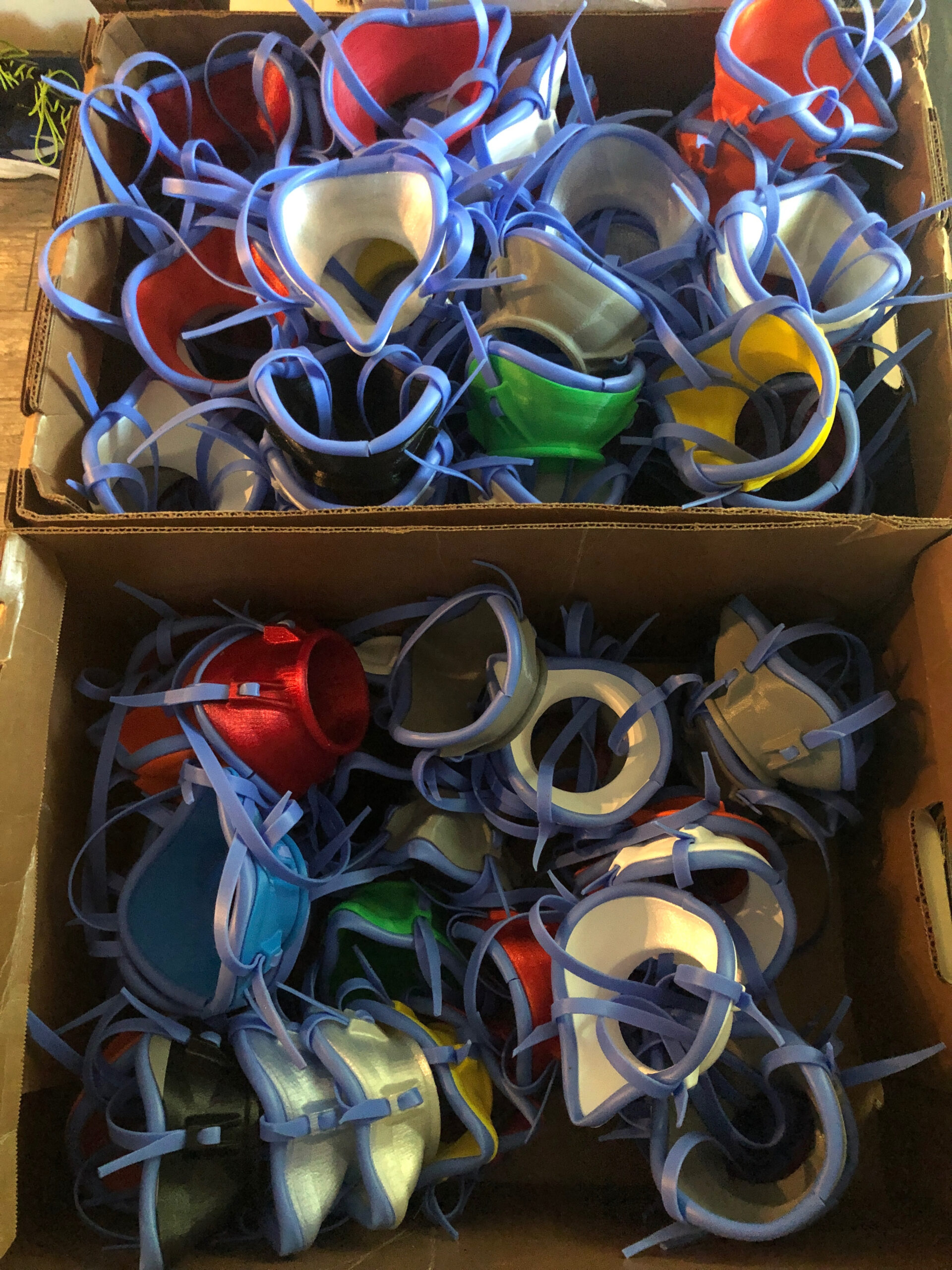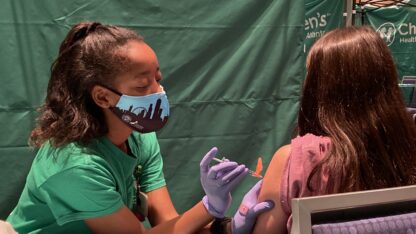University Of North Georgia Uses 3D Printers To Make Masks For Healthcare Workers

The University of North Georgia is producing masks for healthcare workers in response to a shortage of personal protective equipment.
Jon Mehlferber / WABE
Last updated: April 16 at 1:04 p.m.
Hospitals across the country, including those in Georgia, have reported a shortage of personal protective equipment since the spread of COVID-19 began.
Now, professors and students at the University of North Georgia are trying to help by using 3D printers to make masks for healthcare workers.
How The Masks Are Designed
The idea began with Mark Causey, an orthodontist in Cumming. He uses 3D printers to make trays that reshape a patient’s teeth over time. He came up with the idea of using the printers to make PPE masks.
Then, Jon Mehlferber, a visual arts professor at UNG, saw Causey’s mask designs online.
“He had a great idea, but needed a bit of design work to improve the masks that he had envisioned,” Mehlferber said. “So I jumped in and started working on redesigning the masks and making them more efficient and also easier to 3D print.”
Mehlferber runs UNG’s MakerBot Innovation Center, which has dozens of 3D printers. He said the masks his lab produces are made from a kind of plastic comprised of polylactic acid.
“It’s a plastic which is made from corn starch, and is thereby renewable,” he said. “It’s also biodegradable.”
The base of the mask fits around the user’s face. There’s an opening in the front that’s covered with a paper filter. The base can be disinfected and reused. The filters need to be changed.
‘A Student-Led Effort’
UNG has a few labs dedicated to mask production. Ted Forringer, UNG’s assistant department head for physics, runs a digital fabrication lab on the university’s Gainesville campus.
He said the lab had closed when the university system switched to online learning last month.
But when this project came up, UNG reopened the lab. Forringer got special permission to let some students come back on campus. He said they’re practicing social distancing measures while working.
“It’s really a student-led effort,” he said. “My involvement was mostly to get the right people in touch with the right students, and now they’ve taken over. And I’m mostly just still working from home.”
Enes Aganovic is the university’s assistant director of technology integration with Distance Education and Technology Integration. He oversees the production of masks that are made of resin instead of plastic.
“It’s kind of the same principle, which is instead of melting the plastic you have a resin, which is in of course liquid state, and you have a laser which is hitting the that resin and curing it in the same time and creating an object, in this case, a mask,” he said.
Aganovic said the resin masks are better quality but take longer to print.
The UNG professors estimate they’ve produced about a thousand masks, so far.
While practicing social distancing rules, students meet Robert Turner, executive director of strategy and business development for the North Georgia Health System, in a parking lot to give him the masks. Turner sees that they’re distributed to hospitals in the system.
So far, UNG has picked up the cost of producing the masks. The professors estimate it ranges from $2 for a plastic mask to about $15 for a resin mask. The plastic masks take about three to four hours to make. The resin masks can take up to eight hours, the professors say.
How 3D Printing Works
Mehlferber said if you’re unfamiliar with 3D printers, start by thinking about a basic inkjet printer.
“You put a piece of paper in, and you squirt droplets of ink onto its surface,” he said. “Even though it doesn’t add much, you are depositing material on the surface of the paper.”
That makes the paper a little thicker, Melferber says.
“So imagine if instead of ink, you used some material like plastic,” he said. “So if you squirt plastic onto a surface, and it builds up a tiny little layer, and then you did that…repeatedly hundreds of thousands of times, you would build up a…thin layer each time.”
Eventually, the printer will produce a three-dimensional object, like the masks made in his lab, he says.
Correction: The caption and photo credit for the image of Dr. Pranav Jain has been updated.











